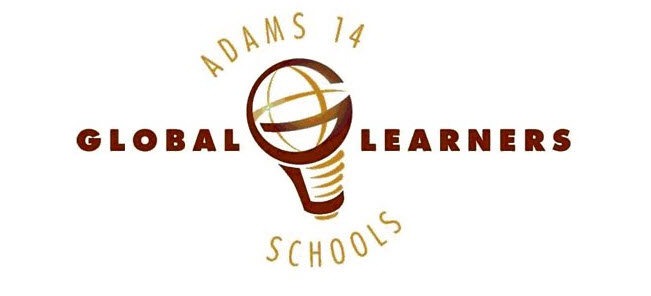
PowerPoint is firmly entrenched in the curriculum of the public schools. Students are frequently schooled in the finer points of finding appropriate animation and using the "right" template for a PowerPoint. Here is the text from the Denver Public Schools Secondary Information Literacy and Technology targets: "multimedia presentation (using PowerPoint or other appropriate software), with slides that include text, transitions, graphics imported from other electronic sources." (Grade 6) Beyond 6th grade students are expected to add animations (i.e. bullets, buttons), hyperlinks, and then maybe some video clips or charts.
(Book cover image from http://www.edwardtufte.com/)
Denver's expectations are not uncommon for students. In fact, the use of PowerPoint by students is considered a high achievement and something to aspire to. Unfortunately, the research shows that PowerPoint done in the traditional manner is more difficult to understand than just reading a document or listening to a speaker. (Here is some research on how to do PowerPoint right)
What does this mean for educators that are trying to prepare students to be Global Learners with 21st Century Skills?
First, call for a moratorium on PowerPoint presentations. (Hey, teachers and administrators that means ditch the overheads too). When we use PowerPoint in an ineffective way we are modeling for our teachers and students. We are sending a powerful message that it is okay to ignore research and do what is convenient (or what is culturally acceptable).
Second, teach students and colleagues to be presenters. Being a presenter is so much more than creating slides. Being a presenter means knowing how to tell a story that evokes emotion and (potentially) calls your audience to action. Being a presenter is a 21st Century Skill, knowing how to make text fade in or out in PowerPoint is NOT.
Third, read constantly about what it means to effectively use visuals. Even though I called for a moratorium on PowerPoint, truth be told effective use of visuals can help tell a story, evoke emotion, and help people remember your point. If you read one blog on a weekly basis, read Presentation Zen.
 (Image to the left is a sample slide that was posted at http://www.presentationzen.com/)
(Image to the left is a sample slide that was posted at http://www.presentationzen.com/)
Denver's expectations are not uncommon for students. In fact, the use of PowerPoint by students is considered a high achievement and something to aspire to. Unfortunately, the research shows that PowerPoint done in the traditional manner is more difficult to understand than just reading a document or listening to a speaker. (Here is some research on how to do PowerPoint right)
What does this mean for educators that are trying to prepare students to be Global Learners with 21st Century Skills?
First, call for a moratorium on PowerPoint presentations. (Hey, teachers and administrators that means ditch the overheads too). When we use PowerPoint in an ineffective way we are modeling for our teachers and students. We are sending a powerful message that it is okay to ignore research and do what is convenient (or what is culturally acceptable).
Second, teach students and colleagues to be presenters. Being a presenter is so much more than creating slides. Being a presenter means knowing how to tell a story that evokes emotion and (potentially) calls your audience to action. Being a presenter is a 21st Century Skill, knowing how to make text fade in or out in PowerPoint is NOT.
Third, read constantly about what it means to effectively use visuals. Even though I called for a moratorium on PowerPoint, truth be told effective use of visuals can help tell a story, evoke emotion, and help people remember your point. If you read one blog on a weekly basis, read Presentation Zen.
 (Image to the left is a sample slide that was posted at http://www.presentationzen.com/)
(Image to the left is a sample slide that was posted at http://www.presentationzen.com/) This is serious. If you question the seriousness of this issue read this excellent blog post regarding the relationship between use of PowerPoint and the failure of the Iraq war planning. (no kidding). The post is a partial review of Thomas Ricks book Fiasco where he writes: "That reliance on slides rather than formal written orders seemed to some military professionals to capture the essence of Rumsfeld's amateurish approach to war planning." The post also mentions the Columbia Shuttle Accident Investigation Board report that stated, "The Board views the endemic use of PowerPoint briefing slides instead of technical papers as an illustration of the problematic technical communication at NASA."
Modeling effective methods for communicating is absolutely essential in the public schools. We need our students to understand that effective communication is not writing bullet points in PowerPoint. Now we know that may be the opposite of effective!


2 comments:
I first heard the term "PowerPointlessness" from an article written by Jamie McKenzie over 6 years ago. Jamie remembers hearing the term from school visit in Australia. As with any form of presentation ranging from no tech, low tech, to high tech, the aim is to inform and engage your audience. There are many skills to be learned and honed to accomplish that aim.
Doc,
I couldn't agree with you more. I can't even list the number of times I've strained my eyes reading 50 bullet points on one slide (maybe a bit of an exaggeration).
But you're right - if we can't figure out the proper way to use presentation tools, then forget the whole thing.
Paper still exists for those who aren't willing (or creative enough) to create a compelling presentation.
How about a massive training effort? Is it even worth the time?
It all boils down to a little bit of design skill - hasn't everyone sat through an unbearable example of "powerpointlessness"?
Post a Comment